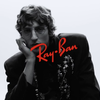This week, The Crimson will publish a four-part feature series examining issues of diversity at Harvard, the product of a two-month study. Today's segment provides an introduction to questions of diversity in theory and in practice.
"Diversity is the hallmark of the Harvard-Radcliffe experience."
So reads the opening page of the University admissions catalogue. It is probably the first time a prospective student is presented with the association between "Harvard" and "diversity." It certainly isn't the last.
Concentrations, hometowns, interests--"diversity" is used to describe all sorts of differences. But in daily Harvard discourse, "diversity" almost always refers to groups considered different because of ethnicity, race or sexual orientation.
For hundreds of years, Harvard was a relatively homogeneous institution, catering to the rich, the white and the Protestant. When we speak of "difference" we traditionally think of differences between minority groups and that historical majority.
But in a community that has come to include people of many cultural, racial and ethnic backgrounds, it is perhaps too simplistic to speak of "minorities" only in terms of that contrast. Those who might typically be labeled "minorities" within the Harvard community may define themselves in countless ways.
Some feel comfortable identifying with well-recognized "minority groups." Others develop uniquely personal ways to define their niche within a community of difference. Still others reject labels altogether and speak of their identity only in terms of ideas and interests.
But many--including the Harvard Admissions Office--agree that diversity of cultural, ethnic and racial backgrounds often means a diversity of past experience. And "minority" classifications can be an admittedly blunt but useful tool in making sense of that diversity of experience.
By that definition, few would deny that Harvard has achieved a fair amount of diversity. More than 35 percent of the class of 1995 belongs to a racial minority group--a number far higher than the proportion of racial minorities in the American population. And the numbers keep getting bigger. Since the class of 1991 was admitted, the minority representation among first-years has increased by five percentage points.
To the outsider, Harvard's campus may appear the model of a diverse community. Taped to every kiosk, it seems, are posters advertising ethnic groups' activities or race-related forums. A snapshot of the Yard on a weekday afternoon, afternoon, Sanders Theatre during a Social Analysis 10 lecture, or Tommy's Lunch on a Friday night would be a sociologist's dream: Black, white, Puerto Rican, Chinese-American, Korean-American and Mexican-American students working and playing together in an intellectual environment.
Harvard is often cited as a model of diversity. But when you scratch the surface, what lies underneath?
But closer scrutiny reveals that just below the surface are oft-unspoken tensions and insecurities--the by-products of Harvard's much-touted model of diversity.
Many of these tensions can be traced, not just to conflicts between different groups, but to competing sentiments within each student.
The individual on campus is one of 6400, faced with a mass of choices--choices of friends, roommates, houses, courses and activities. Those decisions would be daunting in a homogeneous society. Toss in diversity, and they're that much harder to make.
Richard S. Park, a junior who is Korean-American, was once active in Koreans at Harvard and Radcliffe (KOHR). But he no longer goes to KOHR events. Park says he didn't feel comfortable in a group he considered closed-off from the rest of the community. And, he says, he didn't want to lose his sense of individuality.
Read more in News
Complaint Prompts OSHA Query












